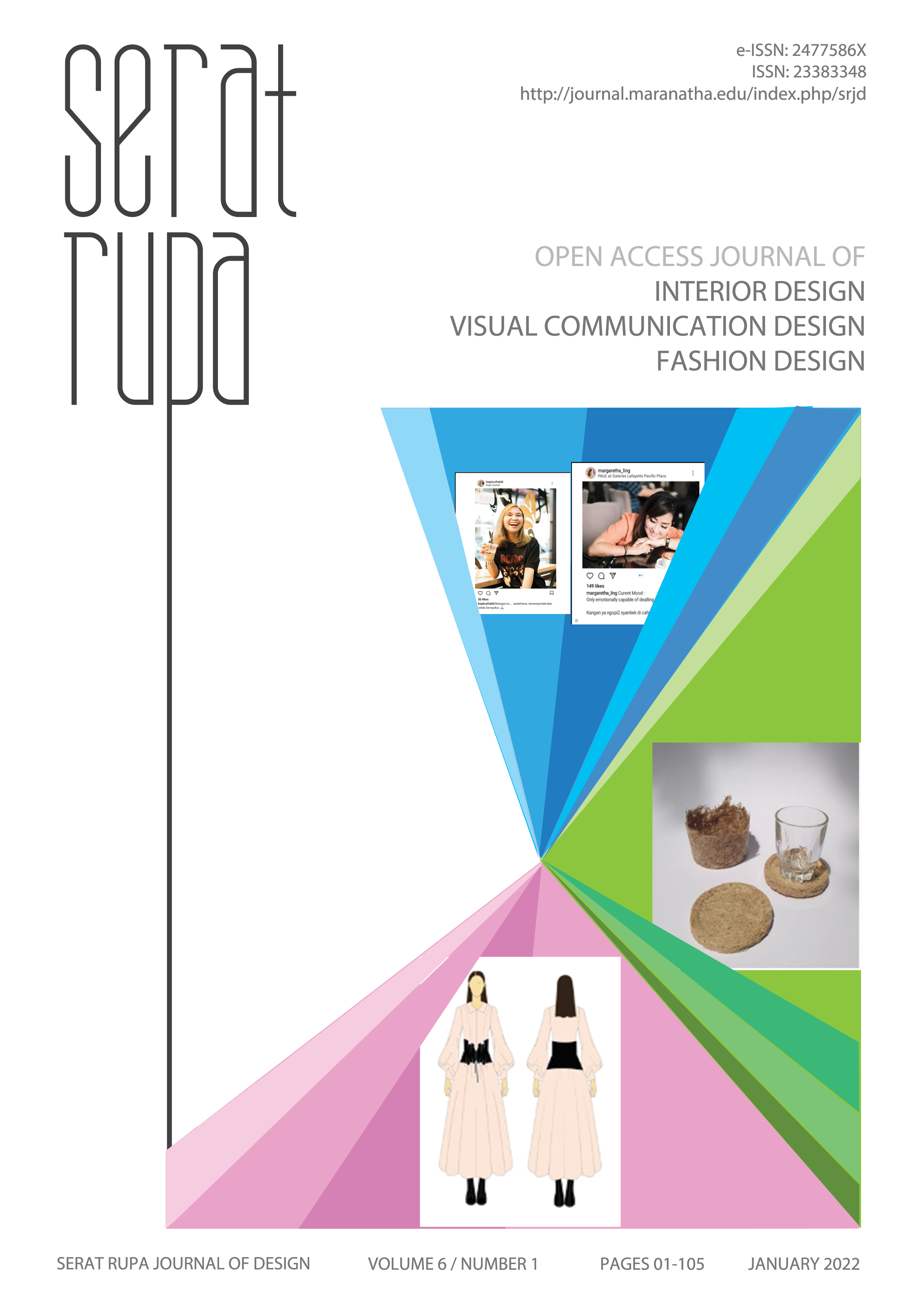PENGARUH LINGKUNGAN VISUAL RUANGAN KULIAH PADA MOOD MAHASISWA UNTUK MULAI BELAJAR
Main Article Content
Abstract
Downloads
Article Details

This work is licensed under a Creative Commons Attribution-ShareAlike 4.0 International License.
References
Adinugroho, I. (2016). Memahami mood Dalam Konteks Indonesia: Adaptasi Dan Uji Validitas four dimensions mood scale (Understanding mood in Indonesian context: Adaptation and validity examination of four dimensions mood scale). SSRN Electronic Journal. doi:10.2139/ssrn.2994648
Castilla, N., Llinares, C., Bisegna, F., & Blanca-Giménez, V. (2018). Emotional evaluation of lighting in university classrooms: A preliminary study. Frontiers of Architectural Research, 7(4), 600-609. doi:10.1016/j.foar.2018.07.002
Dahlan, A. S., & Eissa, M. A. (2015). The Impact of Day Lighting in Classrooms on Students' Performance. International Journal of Soft Computing and Engineering (IJSCE), 4(6), 7-9.
Febrilia, I., Warokka, A., & Abdullah, H. (2011). University students’ emotion state and academic performance: New insights of managing complex cognitive. Journal of e-Learning & Higher Education, 1-15. doi:10.5171/2011.879553
González-Zamar, M., Ortiz Jiménez, L., Sánchez Ayala, A., & Abad-Segura, E. (2020). The impact of the University classroom on managing the socio-educational well-being: A global study. International Journal of Environmental Research and Public Health, 17(3), 931. doi:10.3390/ijerph17030931
Hsieh, M. (2015). Effects of illuminance distribution, color temperature and illuminance level on positive and negative moods. Journal of Asian Architecture and Building Engineering, 14(3), 709-716. doi:10.3130/jaabe.14.709
L. Morrow, B., & M. Kanakri, S. (2018). The impact of fluorescent and led lighting on students attitudes and behavior in the classroom. Advances in Pediatric Research. doi:10.24105/apr.2018.5.15
Lan, L., Hadji, S., Xia, L., & Lian, Z. (2020). The effects of light illuminance and correlated color temperature on mood and creativity. Building Simulation, 14(3), 463-475. doi:10.1007/s12273-020-0652-z
Stokkermans, M., Vogels, I., De Kort, Y., & Heynderickx, I. (2017). Relation between the perceived atmosphere of a lit environment and perceptual attributes of light. Lighting Research & Technology, 50(8), 1164-1178. doi:10.1177/1477153517722384
STONE, N. J. (2001). Designing effective study environments. Journal of Environmental Psychology, 21(2), 179-190. doi:10.1006/jevp.2000.0193
Tomassoni, R., Galetta, G., & Treglia, E. (2015). Psychology of light: How light influences the health and Psyche. Psychology, 06(10), 1216-1222. doi:10.4236/psych.2015.610119
Wongwiwatthananukit, S., & Popovich, N. G. (2000). Applying The ARCS Model of Motivational Design to Pharmaceutical Education. American Journal of Pharmaceutical Education, 64, 188-196.

